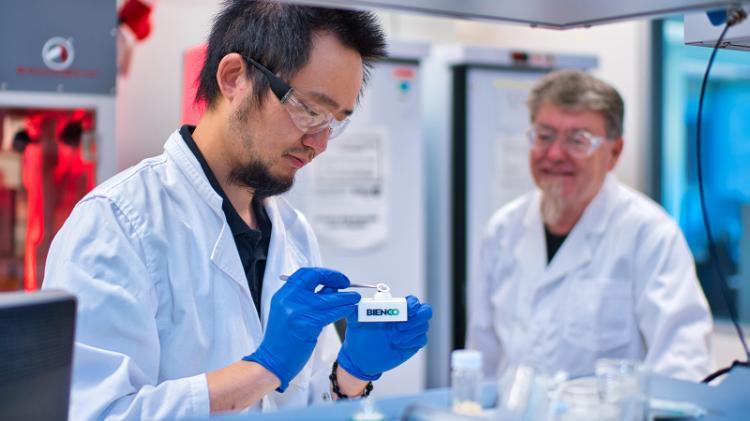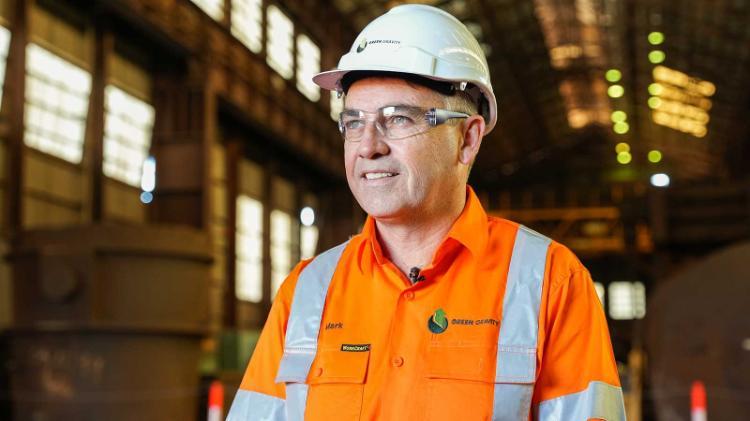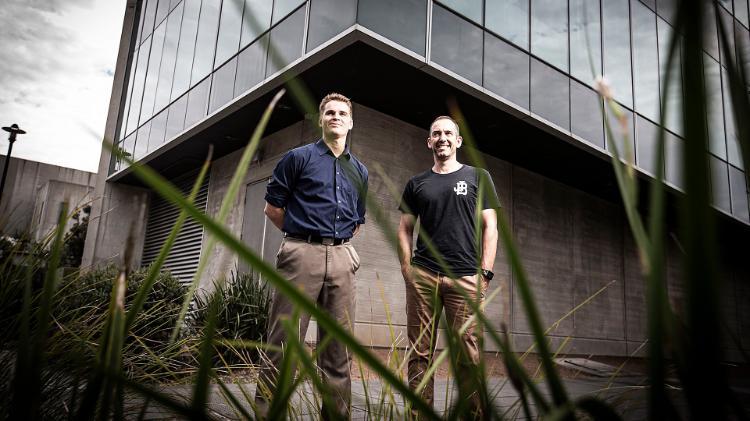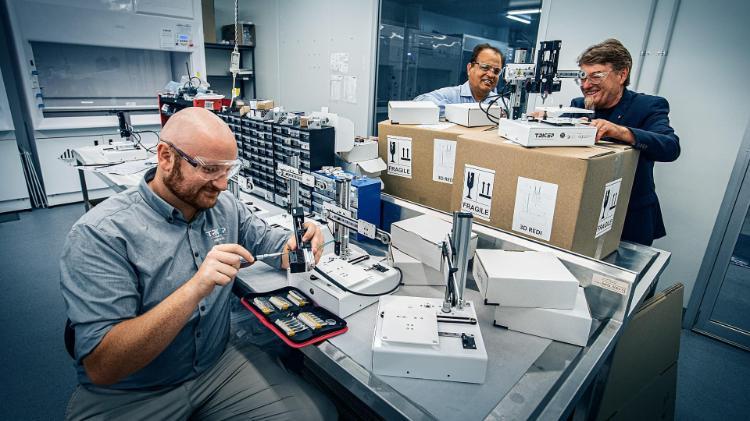Case studies
- A 3D-printed vision for the future
- ARC Training Centre for a more sustainable mining future launched at UOW
- UOW’s green hydrogen energy research boosted to world stage
The UOW team, led by bio-engineering pioneer Professor Gordon Wallace and supported by the Medical Research Future Fund (MRFF) Frontiers Phase 1, has produced a prototype with structural strength that has eluded similar attempts.
According to Professor Wallace, the team have hand-assembled a cornea in the lab, however the breakthrough was assembling the stroma (the strength component of the structure) with aligned collagen fibrils and living cells.
Around 2000 corneal transplants are performed each year in Australia to treat eye disease that causes the cornea to become cloudy, lose transparency or change shape leading to blindness.
The tissue required for these transplants can only be sourced from people who have bequeathed their corneas to eye banks before death. Demand is exceeding supply worldwide, with 12.7 million people awaiting a transplant and less than 1500 donors in Australia in 2022, sparking urgency in the medical realm for a more innovative approach to generate more corneas.

-
SDG 3 - Good Health and Wellbeing
-
SDG 9 – Industry, Innovation and Infrastructure
-
SDG 17 – Partnerships for the Goals
The ARC Training Centre for Innovative Composites for the Future of Sustainable Mining Equipment was launched at UOW’s Innovation Campus in 2023. In Australia, the Mining Equipment, Technology, and Service (METS) industry is projected to contribute more than $50 billion to the Australian economy and generate 80,000 new jobs by the year 2030. This transformation of the sector is geared towards enhancing efficiency, cost-effectiveness, innovation, sustainability, and digitalisation of operations, necessitating the development of safer machinery and equipment capable of functioning in deeper mines and challenging environments.
- SDG 9 – Industry, Innovation and Infrastructure
- SDG 17 - Partnerships for the Goals
Wollongong-based startup Green Gravity, housed at UOW’s Innovation Campus SmartSpace, is enabling the renewable energy transition by developing next-generation ultra-green gravitational energy storage systems utilising disused mines.
Green Gravity is well on its way to becoming the world’s lowest-cost, most sustainable provider of energy storage technology. According to company Founder and CEO Mark Swinnerton, the potential to radically accelerate the global transition and help Australia realise its net zero emissions goal is immense.
The concept is fundamentally simple, moving heavy weights vertically in the legacy mine shaft, storing them on the surface, and lowering them to release their gravitational potential energy as the grid requires. Each mine site’s capacity sits at between 20 and 50 megawatt hours, compared to around 20 or 30 megawatt hours offered by the large-scale batteries deployed in Australia in recent years.
The perfect circular economy model, it uses existing infrastructure and proven mechanical parts, takes no new land or water, burns no fuel, and produces no waste. Green Gravity’s technology is economical, durable, flexible, and infinitely sustainable.

- SDG 9 - Industry, Innovation and Infrastructure
- SDG 11 – Sustainable Cities and Communities
- SDG 15 – Life on Land
/filters:format(jpg)/prod01/channel_3/assets/contributed/research-and-innovation-division/global-challenges/Goal-9.jpg)


















